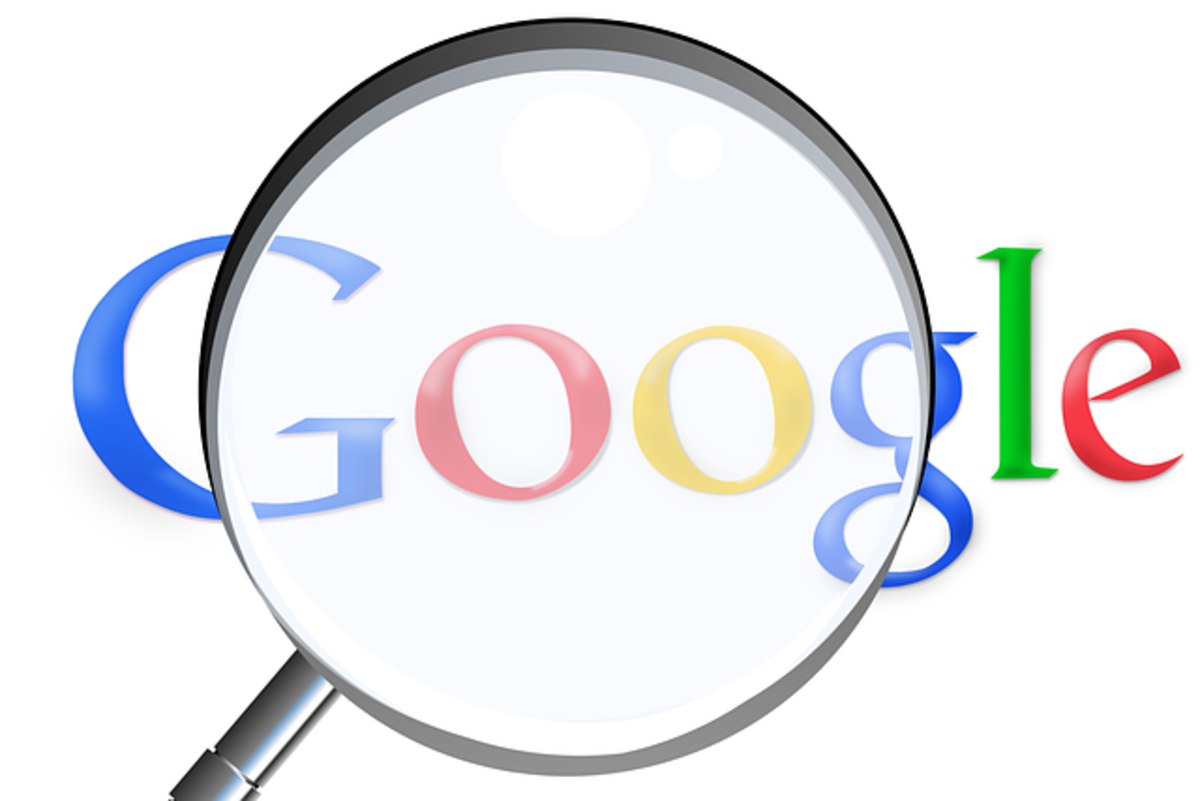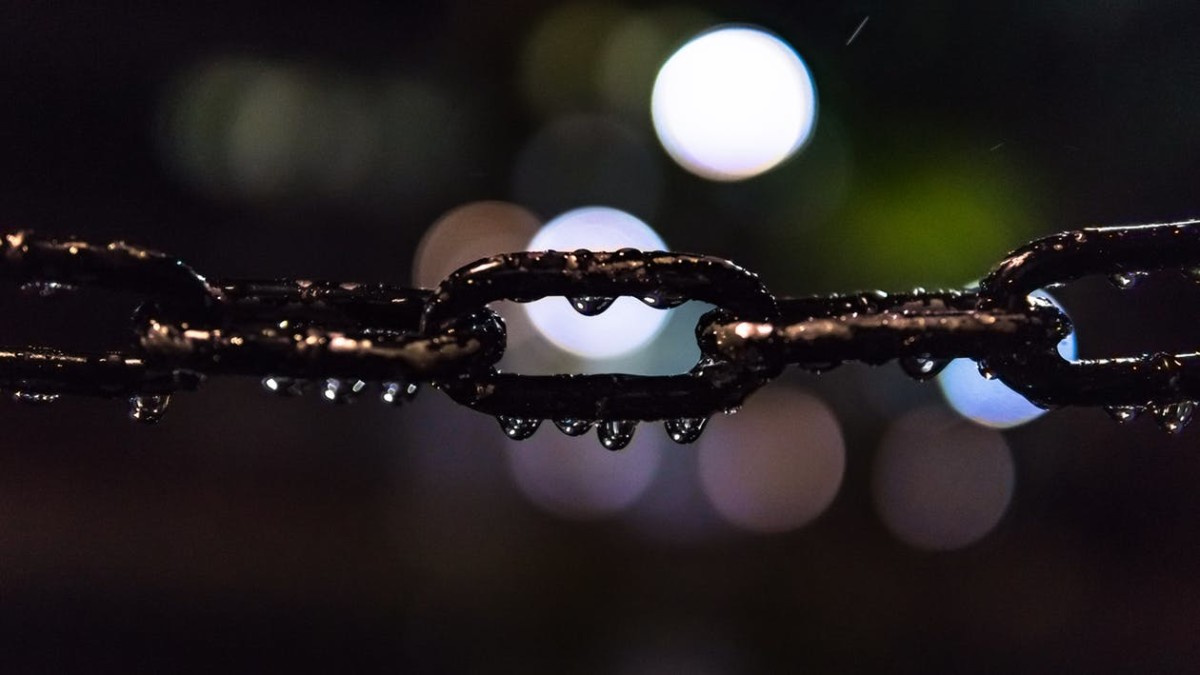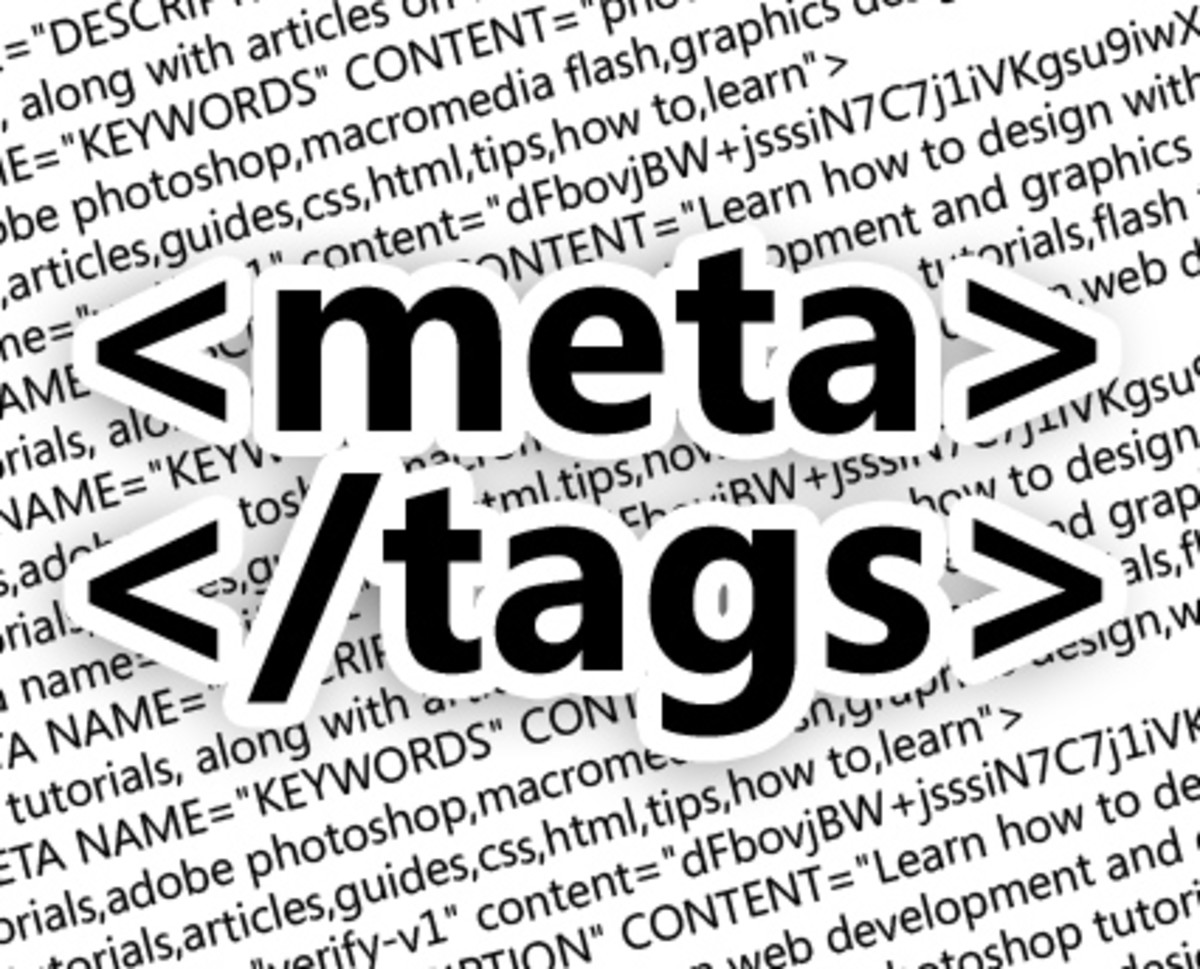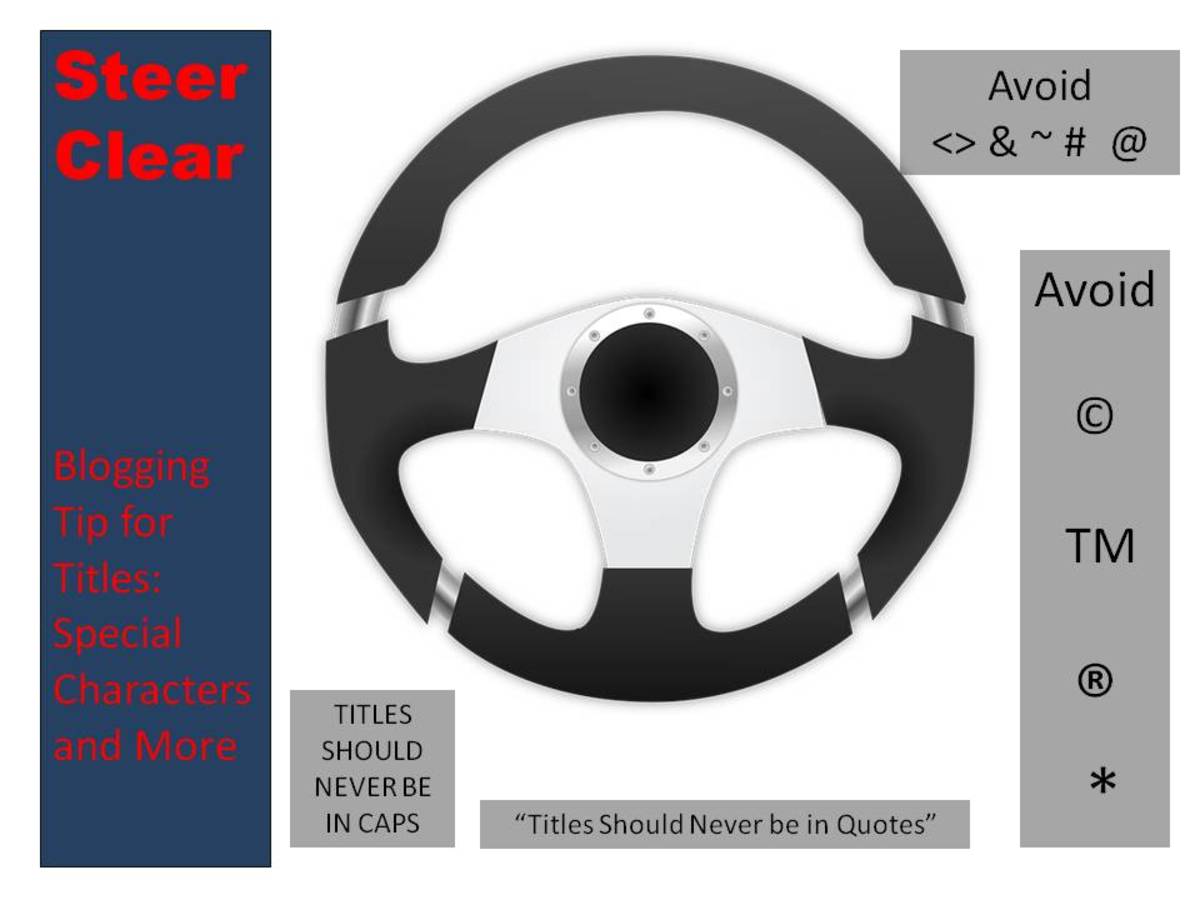Don't Let Black Hat SEO & Google Penguin Eat Your Webpage SERP
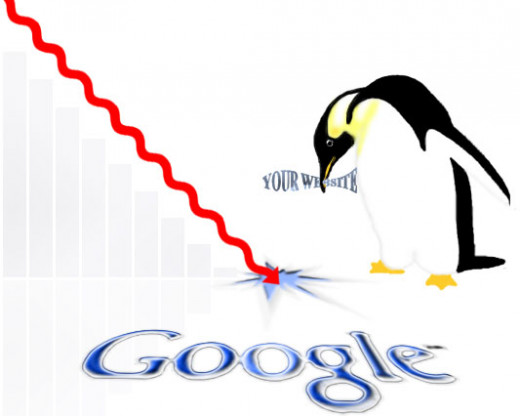
Google's Penguin Claims to Eat Black Hat SEO Experts Alive May Have a Negative Impact on Your Page Ranking
Matt Cutts the head of Google's webspam team warned that Google’s Penguin (who's algorithms weigh the webmaster guidelines heavily into it's calculations in determining search engine ranking) is intended to hinder the SERP boost that black hat SEO experts get when they tapped into spamming optimization methods to boost a site’s search engine page ranking. However, Matt Cutts did not warn that the newly developed Google penguin has left the door wide open for black hat SEO experts to use negative SEO campaigns to knock competitor's out of their page ranking. Yes, I know Google has claimed the oposite, however if you keep reading you'll see exactly how business rivals can affect your Google ranking.
What is Negative SEO?
Negative SEO is the attack on competitors sites by employing black hat SEO tactics, generally by use of poor quality backlinks that lead to the rival competitor's page or pages to cause penalties on the rivals page ranking. Though having a great SERP relies more on other analytics of the webpage, not just quality backlinks, poor quality backlinks could still radically decrease a competitors ranking.
Before Google's penguin came along it was much harder for rivals to implement the search engines penalties and knock competitors out of their ranking, as the use of poor quality backlinks were really the only black hat tactic that could be used against a competitors webpage, unless the rival could hack as well. However Google has gone through a lot of changes over the past 8 months, changes that left Google and those of us who use white hat SEO bent over for those black hat rivals.
Google of course is in the state of denial, believing that some of the new calculations (such as the block this site data received from the Google chrome extension) that penguin implements will help people find what they are searching for better, when in reality penguin has left the door wide open for rivals to destroy a competitors ranking while they further employ spamming optimization methods and still have a great SERP.
Counteracting the Negative Effects
Thanks to the block this site extension, you now have a bit more work to do in order to counteract the effect of negative SEO techniques. However the most effective tactics to counteract and overcome the negative effect that negative SEO techniques have is to keep aware of the black hat tactics that these black hat tacticians are utilizing to destroy a rivals ranking and understand your web site's analytics so that you can watch for any signs of a negative SEO campaign against your web site and counteract the negative SEO techniques effectively.
3 Steps to Counteract Negative SEO Strategies
After proving the serious potential damage that negative SEO campaigns can have on your web site’s rankings, it’s highly essential to be more proactive with your analytics so that you can counteract the effects from these strategies on your web site’s ranking. Procrastination in taking these important measures to combat these negative SEO tactics could lead to your page rankings burial into the sandbox.
1. Tracking links to Ensure Quality Backlinks
Before penguin, the top negative SEO strategy that SEO experts implement is the use of poor quality backlinks aimed at the rival's competing webpage. Poor quality inbound links to the competing page is simple to accomplish, innexpensive, and almost impossible to track, since Google doesn't care whether it was you or the spammer that aimed the “20,000 back links for $15” bundle to your web page, and even after penguin, it is still one of the top negative SEO techniques used to implement search penalties and destroy a competitors page rank. Hence, the most effective strategy to counteract link spamming is to analyze your site's backlink summary of inbound links to your web site for any evidence of link spamming. Although you can make use of Google's webmaster tools that are free to offer you some information pertaining to your sites' backlink summary, if you make use of a platform that enables you to differentiate backlinks based on specific criteria can make it much easier to spot fresh link spamming in your backlink summary.
Watch out for any of these signs of link spamming when you analyze your site’s link profile, as they may be signs of a black hat attack negative SEO campaign:
- Inbound links from sites that have no relativity to your content
- Inbound links from un-warranted sites such as porn, warez, gambling, etc.
- Inbound links from sites that are sneaky redirects or doorway pages that are intentionally made to spam search engines
- Back links from pages linking to more than 50 links
- Back links from pages that prompt malicious software advisories from your internet browser
Now these are just possible signs of a black hat attack and do not necessarily prove that you’d been attacked by black hatter negative SEO tactics. There are various ways you can end up with poor quality links being directed to your page, hence the detection of some poor back links does not definitely mean that a rival is trying to demolish your page ranking.
Despite how these harmful backlinks were placed, your next move is definite…
2. Make Use of Google's Disavow Service to Counteract Link Spamming Negative SEO Tactics
Before the no-follow tag was introduced into HTML coding, webmasters had to go through a nerve wrecking process to identify which of the poor quality links were in fact providing negative link juice and convince the backlink hosting webmasters to remove those proven to be damaging in order to counteract the effects from those negative SEO techniques.
Luckily, Google made the process of identifying possible negative link juice links a lot easier with their recent development of the Disavow Links service. The Disavow tool made available in the Google Webmaster tools, may be tapped to inform Google which links you believe are providing negative SEO link juice.
Just go to the Disavow links tool in Google's webmaster tools, select your site, then click on "Disavow Links".
You will have to confirm a notification from Google of the possible harm to your page rank as a consequence of inaccurately using the disavow tool for disavowing backlinks. Google issues this buyer beware, as when counteracting negative SEO tactics through Google’s Disavow Links program there is a possibility of accidentally removing a healthy link juice back link which will have a crucial impact to your website’s pagerank. Therefore, you should only make use of the disavow links tool if you’ve really encountered a detrimental effect in your website’s search performance, such as a “bad backlink” caution in Google Webmaster Tools or a continuous drop in SERPs performances. Though you must not let a rival demolish your site rankings totally, delaying until you have carefully analyzed every back link so that you won't misinterpret valid backlinks to have bad link juice will lessen the possibilities of eliminating very important links. When a backlink that appears be harmful, is in fact contributing value to the pagerank of your website, asking for its elimination may decrease your page's rankings. If in doubt, you can always ask an SEO expert who can tell you if a backlink is “ailing” and should be disavowed versus those that only appear suspicious.
Google will next ask you to upload a particular text file containing the back links you want to be ignored by the web crawler. Therefore you will need to create a “disavow.txt” file containing information about the domain or URL containing the back link you intend to be ignored by the web crawler which can be created with a word or notepad program and must contain the following information:
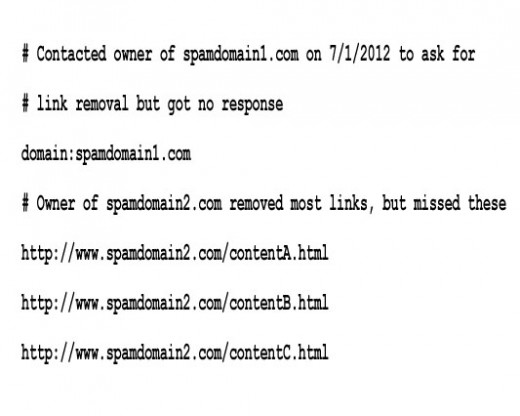
- Complete URLs of particular pages you wish the web crawler to ignore.
- Any complete domains and/or sub-domains you want to block completely indicated with the term “domain:” (be careful with the domains you block, as you don't want to block a domain unless it is completely unrelated to your content or content you intend to create.)
- Comments that describe how you requested a backlink to be removed from a domain or page indicated with this “#” character
You should know that Google's process to devalue a back link could take several weeks and since Google has not specified how much effect reporting ailing backlinks will have on your website’s rankings, there’s no assurance that if you make use of Google's disavow tool it will in fact bring your website’s pagerank standings back to before the black hat attack. With that said you may need the help of other SEO tools and procedures, such as Google’s reconsideration appeal procedure, which may enable you to gain back your lost standings.
3. Counteract Black Hatter Attacks to "Block this Site" from the Penguin
When the chrome Internet browser “block this site” feature is clicked on it tells the penguin algorithms to demote the page rank for that domain or sub domain as someone may have found it to be misleading, webspam, or malicious in nature, and will result in a sudden drastic pagerank drop. There is only one way to counteract such an attack from a black hatter SEO expert, which will take a few weeks to go into effect to gain back your lost standings, and that is to tell the penguin algorithms they made a mistake by filling out Google’s feedback on recent “Penguin” algorithm update form.
Although many webmasters may not have encountered negative SEO campaigns against them previously, with the penguin algorithm added to Googles webspam arsenal, the frequency of a black hat attack may change. It may not be clear as to if future changes in Google’s algorithms will carry on to favor an atmosphere where this specific black hat tactic can grow, making it vital to any web masters page rank to keep track of a sites analytics for evidence of these black hat negative SEO tactics, as immediate identification of apparent harm will be essential to maintaining a ranking on page one.








